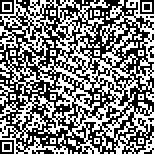| 摘要: |
| [摘要] 目的 探讨椎弓根螺钉与上终板关系对后外侧腰椎融合术(PLF)后邻近节段的影响。方法 选取2015年9月至2022年6月该科行L4-S1 PLF联合或不联合L5骨水泥螺钉的189例患者,术后随访至少2年。其中邻椎病(ASD)组53例,非ASD组136例。采用多因素logistic回归分析探讨ASD的独立危险因素。采用受试者工作特征(ROC)曲线分析研究指标对ASD的预测效能。结果 与非ASD组相比,ASD组椎弓根螺钉与上终板矢状位成角较大,椎弓根螺钉顶端到上终板距离较短(P<0.05)。多因素logistic回归分析结果显示,椎弓根螺钉顶端到上终板距离[OR(95%CI):0.150(0.067~0.336)]、椎弓根螺钉与上终板矢状位成角[OR(95%CI):2.404(1.608~3.594)]是影响ASD发生的因素(P<0.05),且ROC曲线分析其均具有预测ASD发生的应用价值(P<0.05),最佳截断值分别为6.25 mm和5.50°。结论 椎弓根螺钉与椎体上终板矢状位成角和螺钉顶端到上终板距离与ASD的风险显著相关。 |
| 关键词: 邻椎病 螺钉矢状位角度 螺钉顶端到上终板距离 视觉模拟量表 Oswestry残疾指数 |
| DOI:10.3969/j.issn.1674-3806.2023.03.06 |
| 分类号:R 681.5 |
| 基金项目:国家自然科学基金面上项目(编号:82272537,81972106) |
|
| Effect of the relationship between pedicle screw and upper endplate on adjacent segment after posterolateral lumbar fusion: a retrospective study |
|
WANG Qiang, WU De-sheng
|
|
Department of Spine Surgery, Shanghai East Hospital, Tongji University, Shanghai 200120, China
|
| Abstract: |
| [Abstract] Objective To explore the effect of the relationship between pedicle screw and upper endplate on adjacent segment after posterolateral lumbar fusion(PLF). Methods From September 2015 to June 2022, a total of 189 patients who underwent PLF at L4-S1 with or without L5 bone cement screw in our department and with a follow-up period of at least 2 years were selected, including 53 patients in the adjacent segment degeneration(ASD) group and 136 patients in the non-ASD group. Multivariate binary logistic analysis was performed to identify the independent risk factors of ASD. Receiver operating characteristic(ROC) curve was performed to analyze the predictive efficacy of the study indicators on ASD. Results Compared with the non-ASD group, the ASD group exhibited a larger sagittal screw angle between the pedicle screw and the upper endplate of the vertebral body, and a shorter distance from the screw apex to the upper endplate(P<0.05). The results of multivariate binary logistic analysis indicated that the distance from the screw apex to the upper endplate[OR(95%CI): 0.150(0.067-0.336)], the sagittal screw angle between the pedicle screw and the upper endplate of the vertebral body[OR(95%CI): 2.404(1.608-3.594)] were the factors influencing the occurrence of ASD(P<0.05), and the results of ROC curve analysis showed that they all had the application value in predicting ASD(P<0.05), with the optimum cut-off value being 6.25 mm and 5.50°, respectively. Conclusion The sagittal screw angle between the pedicle screw and the upper endplate of the vertebral body, and a distance from the screw apex to the upper endplate are significantly associated with the risk of ASD. |
| Key words: Adjacent segment disease(ASD) Sagittal screw angle Distance from the screw apex to the upper endplate Visual Analogue Scale Oswestry Disability Index |

